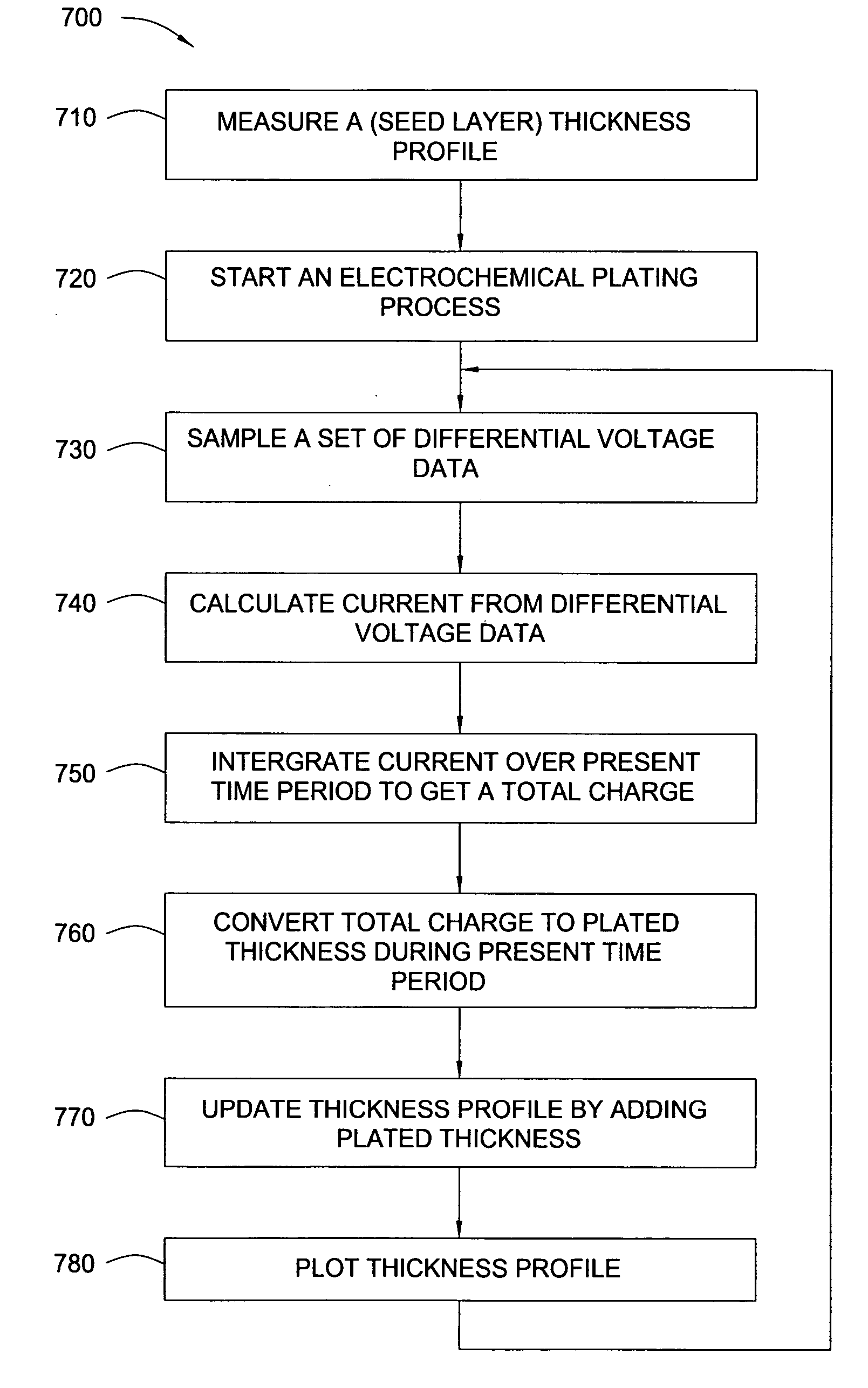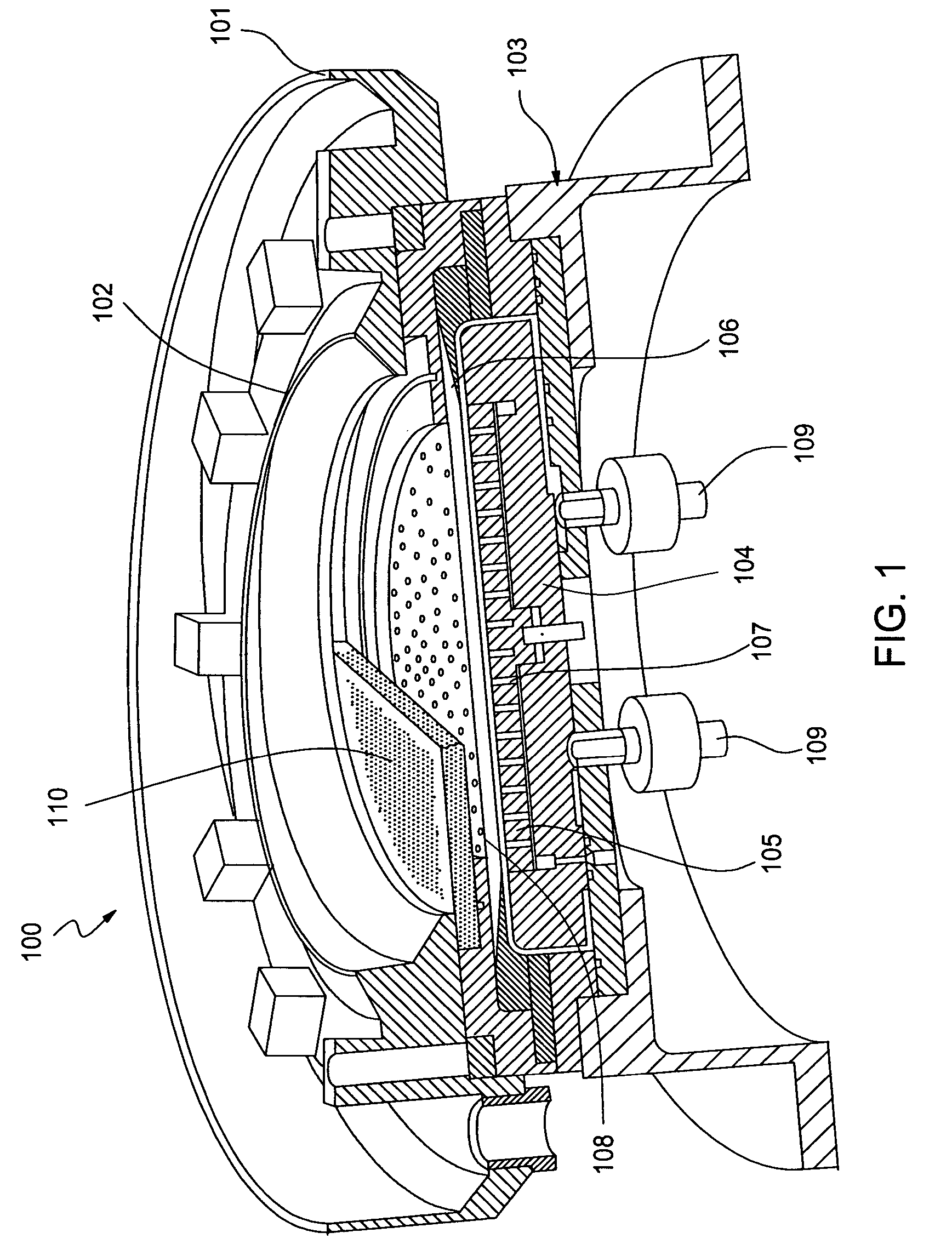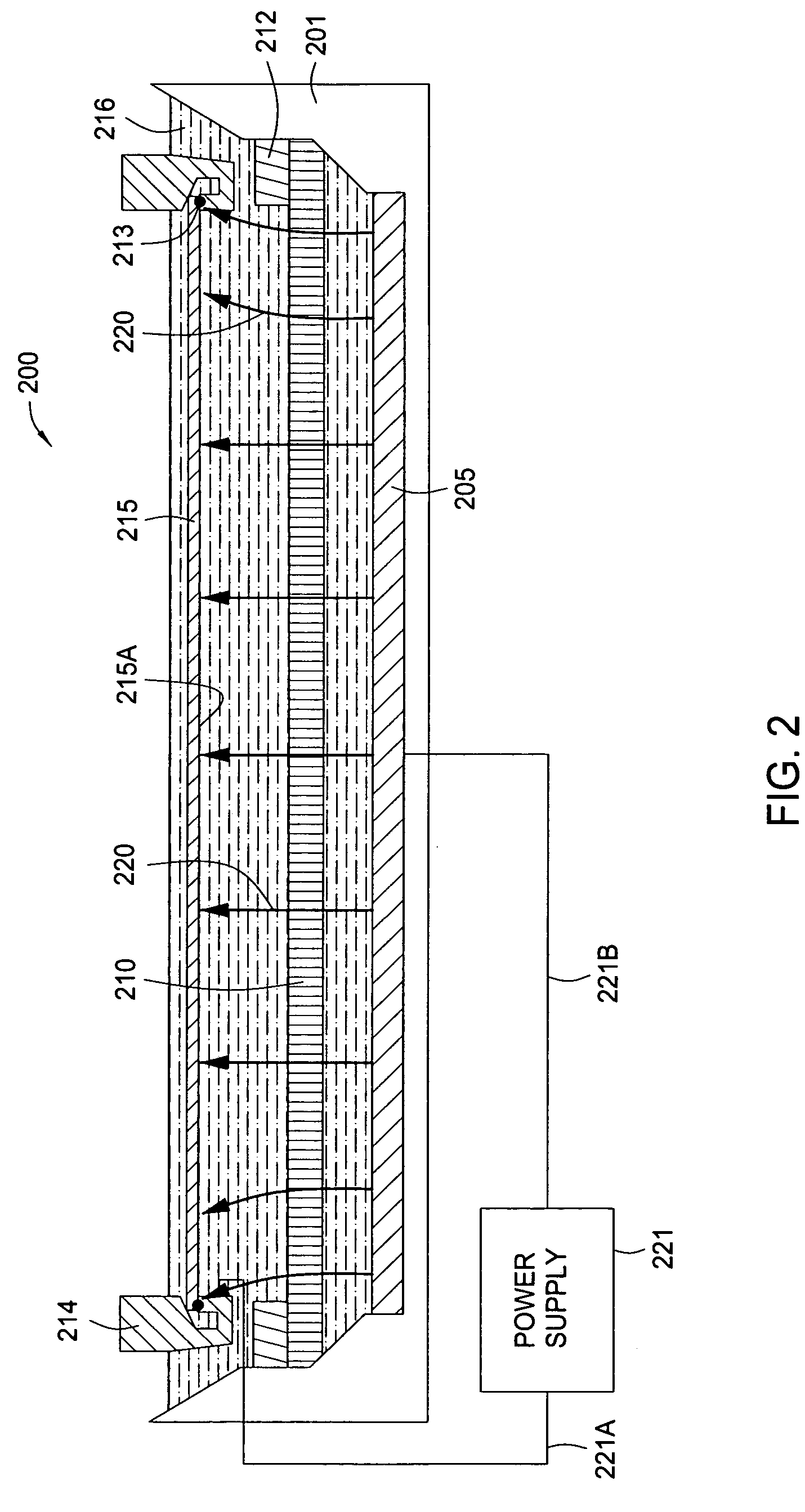In-situ profile measurement in an electroplating process
a technology of in-situ profile measurement and electroplating process, which is applied in the direction of electrical/magnetic thickness measurement, instruments, transportation and packaging, etc., can solve the problems of inability to accurately measure the current distribution of the plating cell, the feature on some portions of the substrate may be undesired or even filled up, and the thin conductive seed layer formed on the substrate is generally very thin
- Summary
- Abstract
- Description
- Claims
- Application Information
AI Technical Summary
Benefits of technology
Problems solved by technology
Method used
Image
Examples
Embodiment Construction
[0040] The present invention generally provides an electrochemical plating cell configured to plate a metal onto a semiconductor substrate. The plating cell of the invention generally includes a fluid volume cell, a contact ring, an anode and array of sensors disposed in the fluid volume. The array of sensors positioned in the fluid volume are configured to measure cell current distributions during plating. A thickness profile of plated metal can be generated from the cell current distributions using a method provided by the present invention.
[0041]FIG. 1 illustrates a schematic view of an exemplary plating cell 100. The plating cell 100 generally includes an outer basin 101 and an inner basin 102 positioned within the outer basin 101. The inner basin 102 is generally configured to contain a plating solution that is used to plate a metal, e.g., copper, onto a substrate during an electrochemical plating process. During the plating process, the plating solution is generally continuou...
PUM
 Login to View More
Login to View More Abstract
Description
Claims
Application Information
 Login to View More
Login to View More - R&D
- Intellectual Property
- Life Sciences
- Materials
- Tech Scout
- Unparalleled Data Quality
- Higher Quality Content
- 60% Fewer Hallucinations
Browse by: Latest US Patents, China's latest patents, Technical Efficacy Thesaurus, Application Domain, Technology Topic, Popular Technical Reports.
© 2025 PatSnap. All rights reserved.Legal|Privacy policy|Modern Slavery Act Transparency Statement|Sitemap|About US| Contact US: help@patsnap.com



